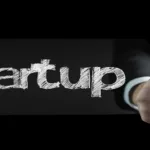Startups are popular, but are accounting expenses for the office making your head spin? Entrepreneur David Cummings estimates that you’ll need to spend about $4,200 per person to have a nice, professional office working space. And to be fair, the hardest part about setting up an office probably relates to all of the planning you need to do beforehand, and then seeing the final cost of physical space, amenities, utilities, and other typical equipment provided to office workers. Saving whenever and wherever you can for your office is essential to success.
Don’t Ignore The Physical Potential Of Your Office Spaces
As a given, things like the air conditioning and heating should work in their respective seasons, and the office should be easy to regularly clean and maintain. Don’t think twice about splurging on these obvious features of an office. In fact, The Economist has published an article referencing many studies about how productivity receives a nice boost in a nice, cool office environment for workers.
Remember that you’re playing the long game here, so your savings patterns should follow the same idea unless you don’t plan on lasting too long. The actual interior of the office benefits most from how you choose to furnish it and the arrangement of the different rooms.
You should be asking yourself questions like “Will this layout make sense in two or five years time?” The obvious part of physical posterity is the maintainability of your office space, and whether or not your office space encourages the business culture and attitudes you seek to foster for your startup or business. That’s a general rundown of the basics: establish a space that suits the basic needs of your workers and then account for furnishings that contribute to a fulfilling atmosphere. It’s like you’re checking off a list of expenditures based off of Maslow’s hierarchy of needs with this thought process.
Savings depend on the long term game plans you lay out.
So I Got The Basics Down, What Now?
But most business owners miss a big part of the picture when planning for these physical eventualities, and it has to do with the exterior rather than the interior. What I’m talking about is the logo of your business. How many times have you seen the fluorescent lights used in neon signs malfunction in sketchy downtown areas? How about the classic example of letters falling off and spelling out obscenities?
You’ll want to plan the construction and development of your logo in similarly to how you plan the interior aspects of your office – it should last. There are a few key ways in which a logo can cost you and those are (1) the logo just being of poor quality in general or (2) the costs associated with keeping a electrical or fluorescent display active. Luckily, there are also a number of straightforward solutions.
For the first issue, consult professional logo designers that can account for the impact of erosion and weathering of your logo and its aesthetic appearance over time. As a starting point, the guys over at Deluxe have a list of signs that you absolutely want to avoid when designing your logo. Your logo will define your business and set a tone for its image and reputation when customers walk by your office or headquarters – don’t waste that chance to stand out.
Speaking of standing out, this leads us to our next issue which is the use of flashy and attractive light displays to bring attention to passing customers. Electricity costs a lot of money, and keeping a sign that’s just emitting light for hours at a time is bound to run you at least a couple hundred dollars a month. Just think of how much of a pain forgetting to turn your car lights off when getting out of your car is for your car’s battery and you’ll get a sense of the problem.
But worry not, technological advances have your back in the form LEDs or “light-emitting diodes” which are over an order of magnitude more efficient than incandescent light bulbs in terms of their life span. Again, if you really investigate the mechanism behind how a traditional light bulb works, you’ll find that it relies on the concept of resistance. Incandescent light bulbs are often really hot to the touch because they’re emitting a ton of energy in the form of heat, and that might as well be money diffusing right out of your pocket.
Check Out My Office Now, Am I Missing Anything Else?
Okay, now you’ve hopefully got a nice solid, physical grasp and management of an office space. Ignoring all the complexities of accounting and filing taxes on all of these pieces of equipment, we’ve basically achieved our goal of creating a good workplace environment that saves based on long term considerations. Now that you have a physical presence, it’s time to play up your virtual one.
Begin by stepping up your social media game. Get on all of the popular outlets like Facebook, Twitter, LinkedIn, Pinterest, Instagram, and whatever else there is and execute a strategy to target specific niches of audiences relevant to your product during specific periods of time. Predict which types of people will be attracted to your product and then start brainstorming some ways that will allow you to cast a net for those individuals.
Don’t overlook things either. A lot of the time, honesty is the best policy, and an honest, straightforward approach that values your customers and shows them that you actually care about them will do wonders for your reputation. With happy, repeat customers, your office space will finally begin to generate returns and pay for itself, which is in itself a proactive way to “save” on costs.








